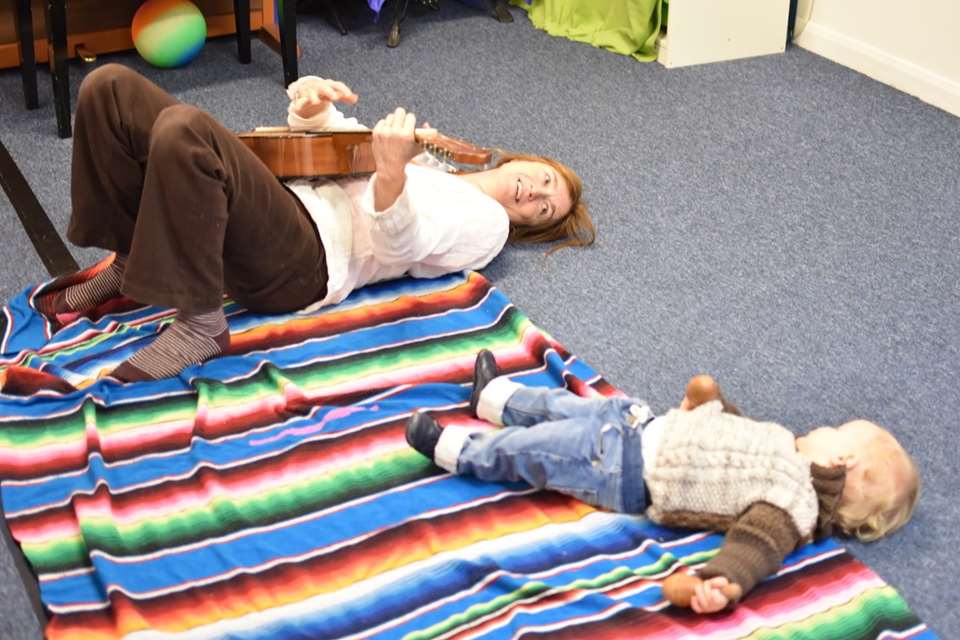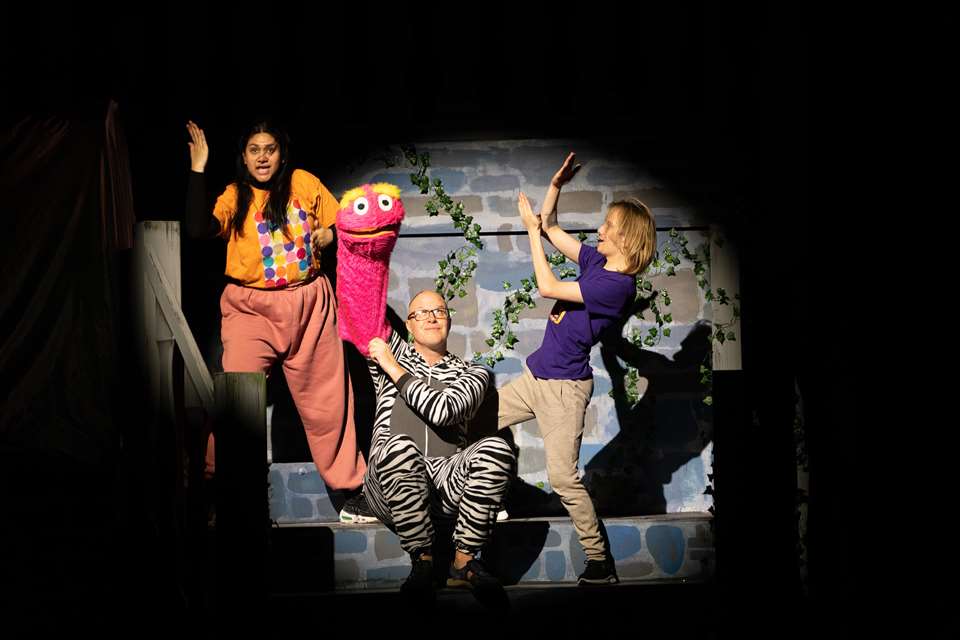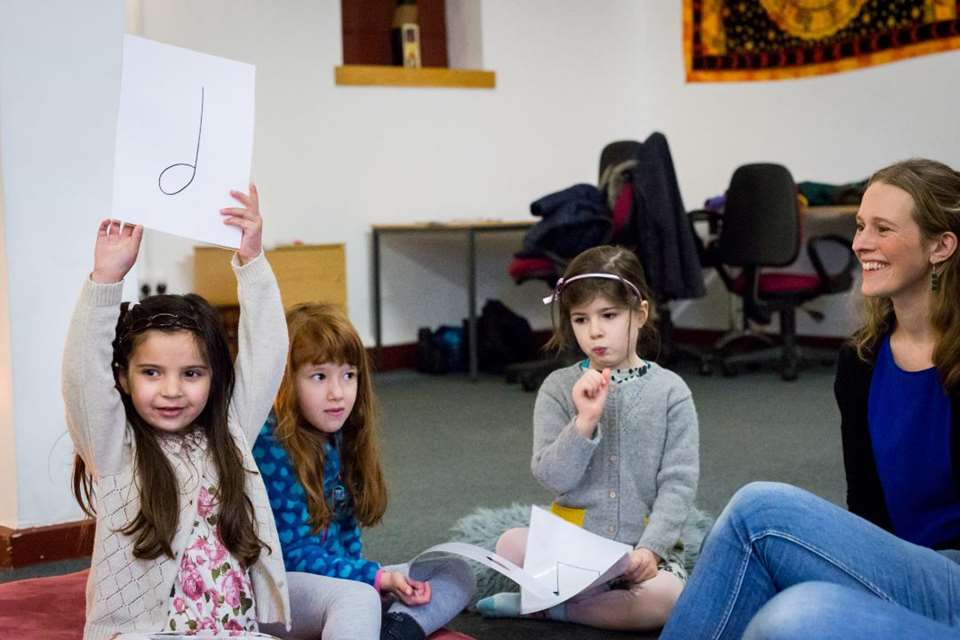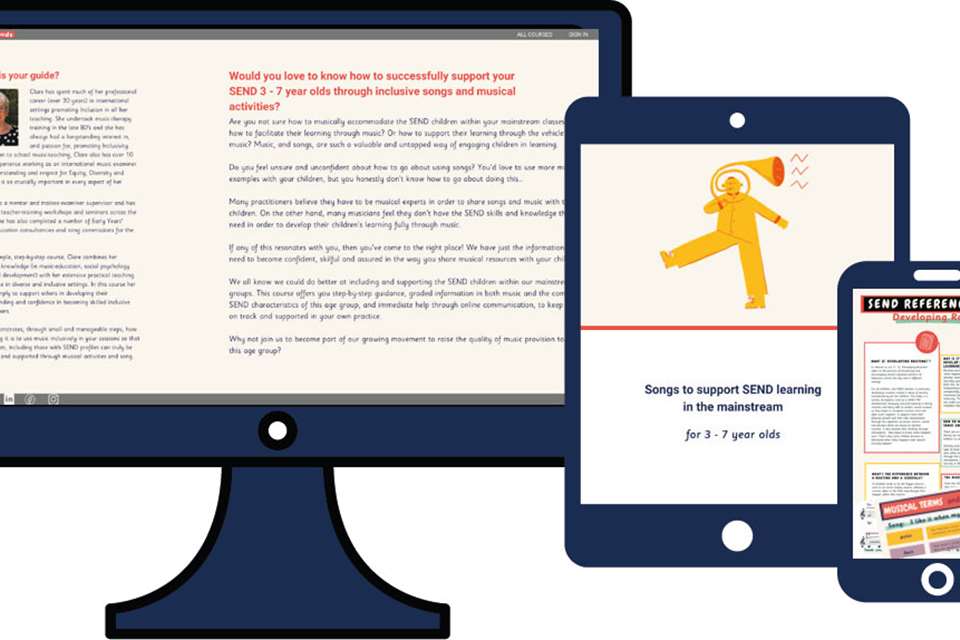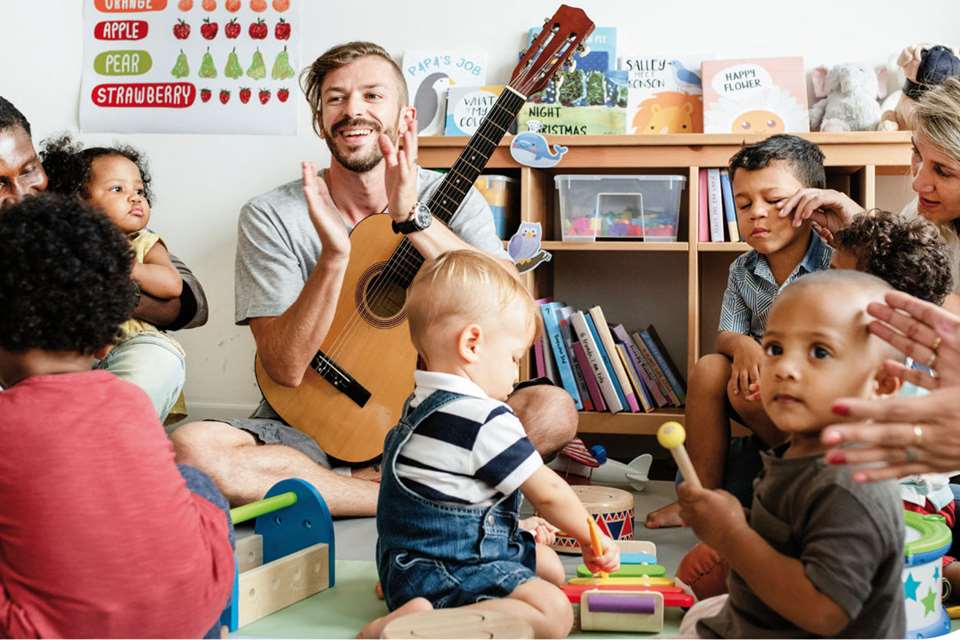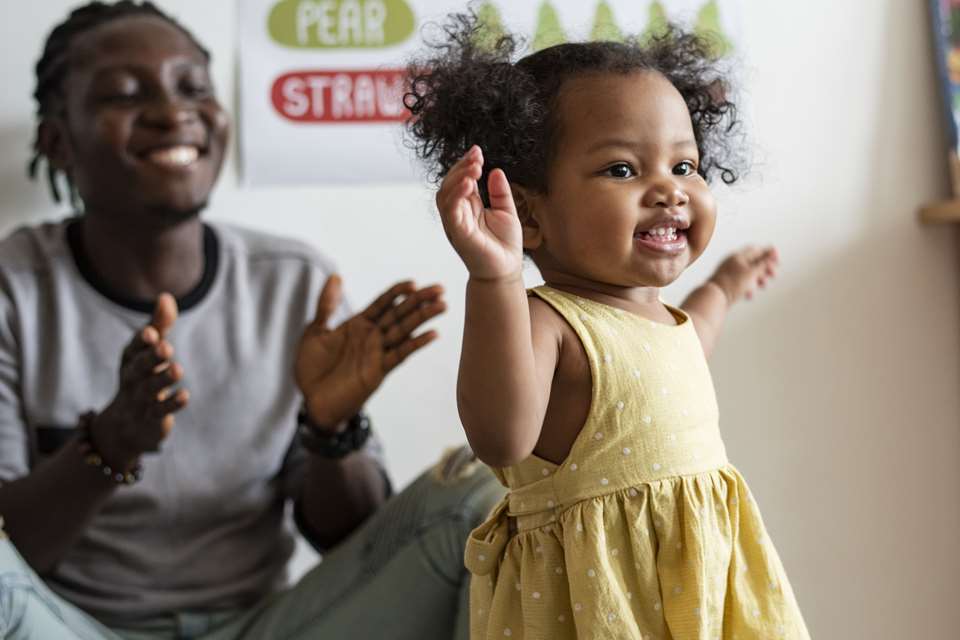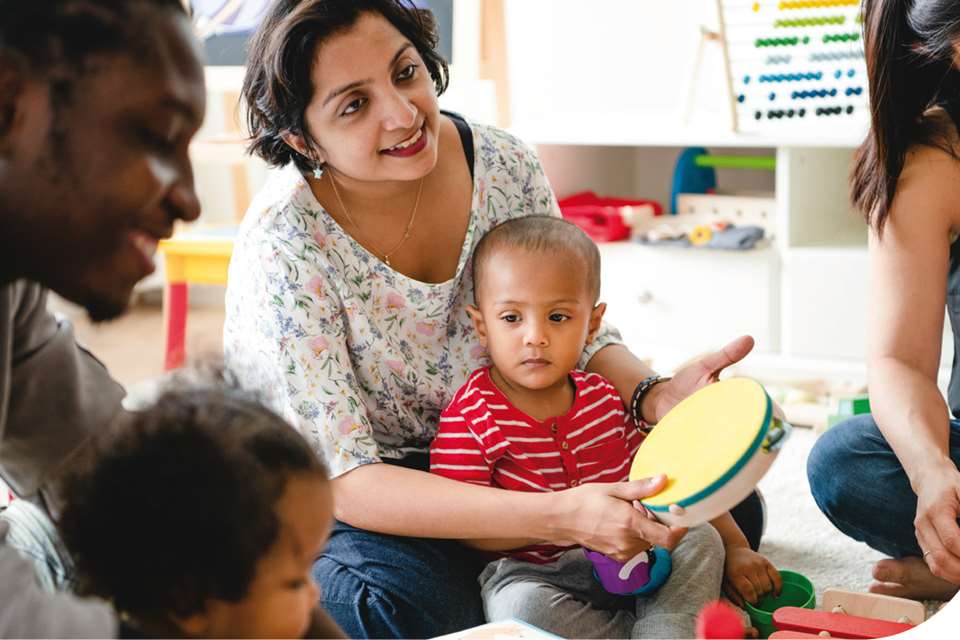Music in silence: Deafness and early years music
Emma Hutchinson
Friday, April 1, 2022
When working in early years settings with deaf babies and children, Emma Hutchinson, founder of Music House for Children, encourages playfulness, flexibility and spontaneity. Here, she shares her experience and guidance.
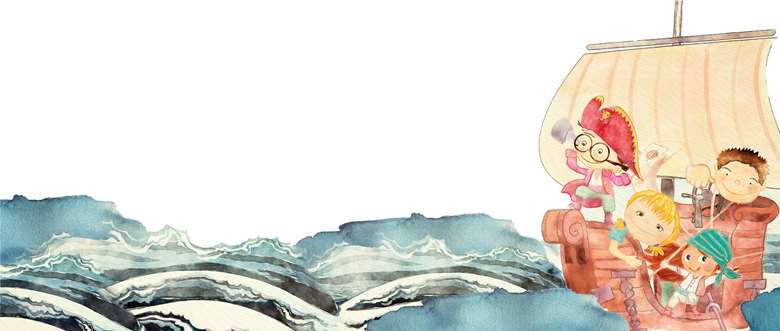
Pronia/AdobeStock
As a young child diagnosed with permanent deafness, I would often disappear to a quiet place to contemplate the world, think about things, and visualise patterns, action, friends, and most significantly, sound. In these silences, I saw sounds in my head – crazy melodies dashing about with interesting shapes, texture and meaning. Later, having secured a golden ticket to Chetham's School of Music, these head songs became my companion in the secret spaces I inhabited – on city rooftops, high walls, scaffolding towers, cupboards, tunnels, even underwater. I saw, I moved, and sometimes danced. I felt, I imagined, and created. I was completely immersed; just me and my space. In the silence, the music I heard was soaring, dramatic, complex – it was often deafening!
What is it about silence? Is there truly such a thing? Silence to me is when there is a complete pause of all multi-sensory messages before motion, visual, and audio again ignite into an explosion of new sounds, melodies, and harmonies. This silent yet living electricity – or activation of air waves – is always accompanied by expression or emotion of that moment and depends on what we see and who we meet. The deaf actress Rose Ayling-Ellis captured this multi-sensory musical flow beautifully in her dance on Strictly Come Dancing 2021. How we interpret musical flow is what makes us individual.
How babies learn
As I galloped through my life and career, it became evident that music had given me all I needed for communicating and staking my place in a noisy world. I assumed that all children had as much musical training as I did. Later in my teaching and research, I realised that this was not the case. Deaf children have very little regular music, with the assumption that it is not compulsory or has to be delivered by a therapist.
Babies and young children experience and learn in multi-modal (multi-sensory) ways. Within their surroundings, resources, and loved ones, they experience an extensive range of emotions, and movement and sound patterns that are often beautifully expressive, deeply personal, and meaningful. The ups and downs, swoops and sways of arms, legs; the precise, repetitive vocal timings accompanied by movement or vice versa; the unexpected dynamic flow and melodious nuances are all musical components. The seemingly silent exploration of a fine (small) motor activity, such as fast wiggling fingers, is musical with a sort of innate, predisposed musical pulse. Dalcroze further suggests ‘musical rhythm can only be appreciated in relation to silence and immobility’ (Dalcroze p.83).
These early multi-modal experiences establish primary social foundations and provide intrinsic pathways to later music learning. As Flohr and Trevarthen (2008) note, the ‘preschool child's spontaneous vocal performances and enjoyment of musical sound is interwoven with growth of all expressive movement and gesture, with the emotions…’ (p.53). They later discuss musical beginnings through cultivation of ‘both the body and brain’ (p.57) by collaborating through movement, emotion and gesture as experienced by their environment, things and people around them.
But what happens when not one, but two means of communication are taken away?
When mask wearing became compulsory, it was for me akin to a visual guillotine. Interactive visual and physical clues vanished overnight. Eyes were averted as though the virus could be caught by looking. Physical ambience, playfulness and spontaneity diminished as verbal communication became confined to the most basic requirements. Expressive emotional exchange – critical for communicating and establishing innate musical spontaneity – ceased. Enforced mask wearing shattered my ability to cheat when I could not hear. Second guessing emotional responses was a disaster – I could no longer say ‘I agree!’
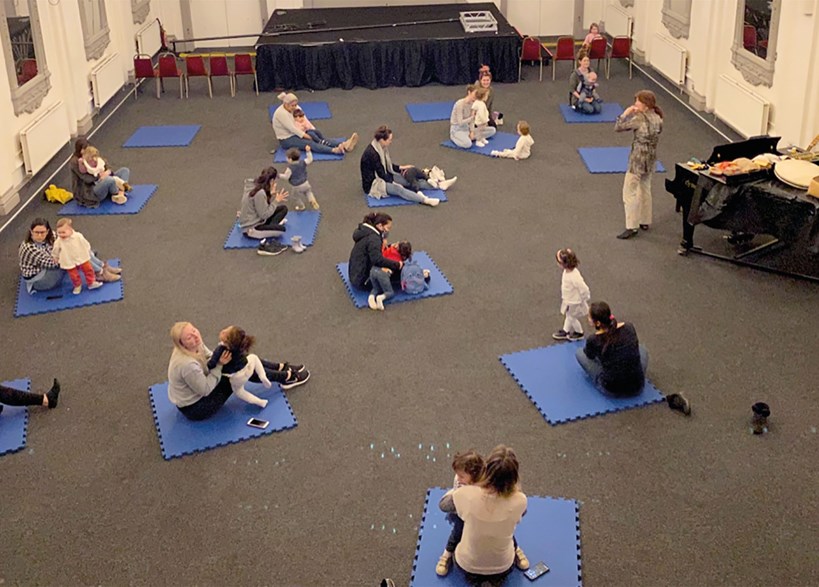
A socially distanced session at Music House for Children © COURTESY MUSIC HOUSE FOR CHILDREN
Losing visual cues
Families with deaf children confirmed that their children withdrew into themselves, spoke less, and were confused, with little ability to confidently interact and vocalise with others. The visual silence and restricted movement provided no inspiration to light the inner song. Speech was inaudible and subsequently became irrelevant. Most significant of all, the language of emotional expression had been stolen. As Dalcroze wrote, ‘The value of gesture depends on the emotion that inspires it’ (p.139). I for one had no choice but to laugh about it all, wave my hands a lot, gesticulate wildly with my eyebrows, and admit loudly for the first time in my life that I simply could not hear.
Like me, young children lost all these visible clues. This blocks most pathways to social engagement, shared interaction, and intrinsic, early communicative musical experiences. As social beings, the visible and physical mechanisms are vital for our children's development and subsequent emerging musical behaviours. If hearing babies struggled with mask-wearing, imagine how deaf babies felt!
As we resumed music classes with masks and distancing in place, I saw confusion – even fear – in children's eyes. The baby and toddler classes were particularly difficult, with families being two metres apart and babies pulled back if they ventured too far. I could see their little bodies stiffen for fear of conversing with others. The emotional anxiety had a ping pong effect, as adults and children resisted the normally spontaneous shared musical experience. To add to our collective woes, my Perspex mask steamed up whenever I played my cornet.
What can teachers do?
It is still too early to understand the impact of the pandemic on young children's primary building blocks. However, by being actively multi-sensory in our practice, music educators can do much to halt the damage and strengthen kinaesthetic ability to prevent children from becoming musically arrhythmic – i.e. described by Flohr and Trevarthen (2008, p.74) as ‘having all the notes in the right place but is dull and tedious, lacking nuance of weight, motion, time’. Post-pandemic, are we going to stand back and see our children's innate creative musical voices simply function?
Music educators need to look urgently at adjusting approaches to teaching – perhaps even dismantling predetermined teaching structures – to allow our children to show us the way to their own, innate musicality, recently forced into dormancy. I hope these simple practical suggestions give you a resolve to leap off the structured diving board and take creative risks as we come out of this extraordinary period.
Be more of you!
- Be visible
- Be expressive
- Move
- Share emotion – bounce off your children
- Be silent, respectful, and playful
- Listen
- Mean it!
- Go off-piste.
All the above might sound straightforward, but this is the difficult part; with multi-modal in mind, think about all these points simultaneously. Be more visible with how you teach, and what you teach with. Be bigger! You might utter, ‘but I'm not an actor!’. Believe me, this is not about hamming it up. This is about extending that extraordinary electricity of inner or kinaesthetic learning to your children. Find, create, and use playful, relevant resources to capture interest, understanding and, ultimately, participation and ownership (of the activity). This reinforces the topic, nurtures response and, by giving (the resource) to them, encourages ownership of the topic – especially in deaf children.
Be playful in everything you do – seek it out and connect to your childishness. Ask yourself: ‘What is it truly like to be a child? How do they experience life?’. Your answers will link nicely into expressive physical play and vocalising. Mean what you do. Be full of wonder, even as you share your incredible music skills. Be visibly playful with emotion – happy, sad, worried, amused with your activity. Yes, ‘negative’ emotion is as critical and real-life as all the happy bits. Those challenges are there for you and your children to discover, question, explore and understand.
The brave music educator
Children unconsciously bounce musical ideas off each other, particularly when unsupervised. Through these early experiences children become accomplished listeners, creators, and performers. A good music educator will extend musical knowledge, skills, and values based on this discovery. As Campbell (1998) writes, ‘the verbal lore is frequently embedded in rhythm and pitch…’, ‘the musical parts are integral to the lore as a whole’. (p.66).
It takes a brave music educator to step into the unstructured abyss to help our children to catch up with care-free, spontaneous vocal and musical exploration, and is a huge responsibility. Here is a snapshot example of what musical play could look like with two- to three-year-olds:
I took them on the ocean in a boat – I showed them my boat (a large piece of cardboard), we sat on it together. We created the sounds together. I showed and shared my resources: fish (socks). I was/we were worried about getting wet (instruments and voice)! What did we see? How did we move? How fast? Ah yes, slooooow. What sounds does the ocean make? What? Really? Where did that fish go??? We enjoyed the activity/song/piece together. We laughed! We squealed! I became quiet; I gently, seamlessly withdrew. I watched and listened as they shot across the ocean, up and down; exploring, seeing, doing, understanding. I was glad.
Give them time, space, and silence to register, absorb, reflect, share and respond. Let them be. Jump ship. Chuck your lesson plan into the water – go off-piste and let them be. Don't worry about that silly box-ticking. This will happen because you engaged, you saw, you remembered. Follow your children's lead, and new things will emerge.
As I write these closing words, my funny ears catch faint sounds of the wind. Yet another ‘swishy swoshy’ tune pops into my mind. My upstairs is a madhouse. Capturing it is easy. Releasing it and sharing it in musical ways – now there's a result for us all.
Useful links and literature
-
How to make music activities accessible for deaf children and young people - Music Mark.
-
Ensuring music does not go ‘in one eye and out of the other’ (2017).
-
Engaging deaf children with Music (2013)
-
Campbell, P.S. (1998). Songs in their head. Oxford
-
Jacques-Dalcroze E. (1920) Rhythm, music & education. The Dalcroze Society Inc.
-
Gruhn W. and Rauscher F.H. (2008). Neurosciences in Music Pedagogy. Nova.


